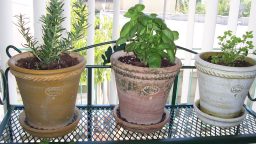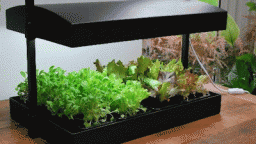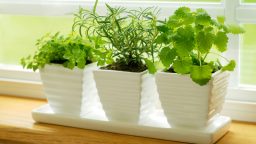Herbs can be a helpful addition for any homesteader. They can be used for flavoring food, and in some cases, the herbs will even have medicinal purposes. Depending on where you live, you will not be able to have a garden all year long, and this would normally mean an end to your herb production until things warm up again. However, if you still want to grow your herbs throughout the year, it is possible. You just need to grow them indoors.
Types of Herbs to Grow
When you are growing herbs, think about the best types for your needs. Consider the herbs that you will be using the most of and that you want fresh. What are you using in your food? What might you need for medicine? Some of the most popular options when it comes to indoor herbs include mint, thyme, oregano, parsley lavender, and sage. Once you know the herbs you would like to grow, spend some time learning more about them and what each one takes to grow.
Prepare the Soil
One of the big differences between growing outside and inside is that when you grow your herbs indoors, they will usually require more maintenance. You need to make sure you have a layer of small rocks on the bottom of the pot before you add the soil mixture. The mixture should be 20% perlite and 80% soil. Make sure that you know about each of the different herbs you are growing and anything special they might need to thrive.
Misting the Plants
When you are growing the herbs inside in the winter, there is a chance for the herbs to dry out. This is especially true when you have heating in the home, as you naturally will during the cold months. Instead, your best option is to use a spray bottle to mist the plants. You can add some water to the soil, but you should also mist the plants about once per week.
Although you want to be sure the herbs do not dry out, they still need to have good drainage. If the water sits in the soil and has no way to drain, it can cause the roots of the herbs to rot. Add drainage holes to the pots.
The Temperature and Light
You will find that you do not have to change the temperatures too much to make the indoor herb garden happy. The plants will do well in the mid-60s to the mid-70s, which is typical for interior home temperatures in the winter. Overnight, the temperatures dip a bit, but the plants are fine with this as well. It closely mimics temperatures outdoors during the warmer parts of the year.
The herbs should get at least four hours of sun each day. Placing the herbs in windows that are facing the south or the southwest should give you plenty of light.
When you first start your indoor herb garden, you will have a period of trial and error as you start to grow different types of herbs and try to perfect your techniques. Overall, it is easy though, and you will get the hang of it quickly.
If you liked this, you might also enjoy…
Holistic Medicine Basics…
Ever Considered Taking Yoga? Read this…
The Ultimate Woodworking Course..


